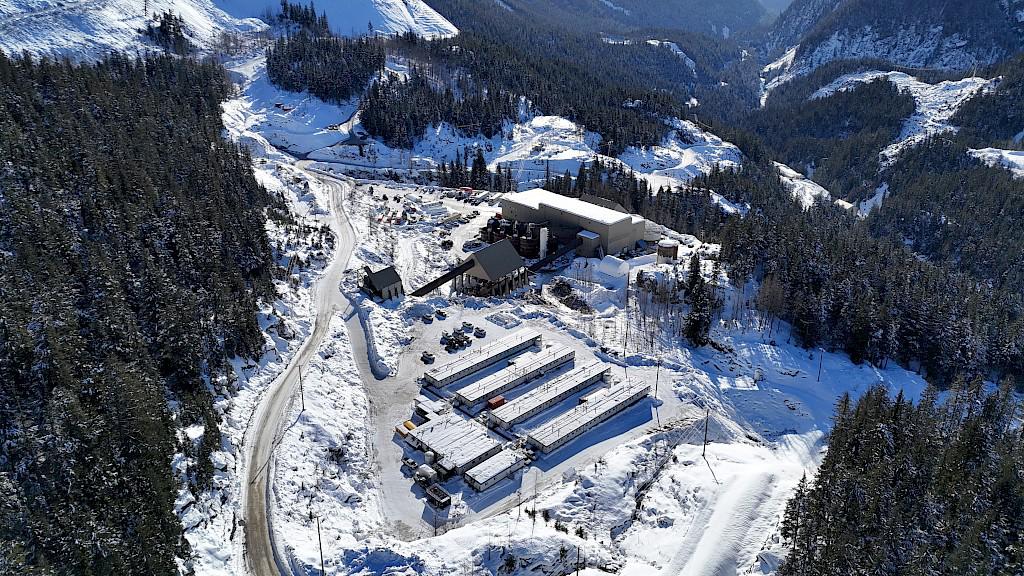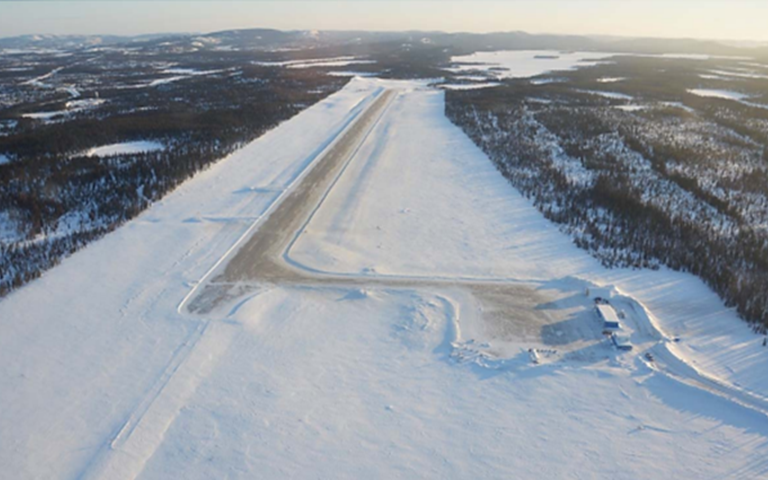Winsome Resources has signed an exclusive option to acquire the Renard project in northern Quebec and investigate repurposing its existing infrastructure into a lithium processing operation. Courtesy of Winsome Resources.
Welcome back to your weekly mining news recap, where we catch you up on some of the news you may have missed. This week’s headlines include the fitful ice road-trucking season, millions for an Australian-listed copper and gold developer in Newfoundland and Labrador and the federal government gives another year to its Mineral Exploration Tax Credit.
Iamgold announced on Sunday that it had poured the first gold bar at its open-pit Côté Gold mine in northeastern Ontario. Côté Gold is currently expected to yield between 220,000 to 290,000 ounces of gold this year, at cash costs ranging between US$700 and US$800 per ounce. Commercial production is anticipated in the third quarter of this year.
Winsome Resources has entered into an exclusive option deal to acquire Stornoway Diamonds’ shuttered Renard operation, which includes a diamond mine, processing facility and other infrastructure, near Winsome’s Adina lithium project in the James Bay region of Quebec. If Winsome decides to make the acquisition, it would be granted the option to acquire these assets for $52 million before Sept. 30, following approval from the Quebec Court. In the meantime, Winsome Resources will investigate repurposing the Renard project as a lithium processing operation, which is situated approximately 60 kilometres south of the company’s Adina Lithium project.
When faced with the challenge of how to increase enrolment of women in engineering programs across Canada, a team of volunteers working in engineering started Camp Engies, a not-for-profit organization that promotes careers and education in STEM (Science, Technology, Engineering and Mathematics) for young girls in grades five to eight. By engaging young campers in STEM-related activities, these camps seek to increase young girls’ confidence in their abilities, so that they might pursue a career in STEM in the future.
Following an abnormally warm winter in Canada, the ice road that spans 400 kilometres and is critical for the trucking of supplies to diamond mines in the Northwest Territories, was delayed in opening this year, as reported by Reuters. The road, which runs across frozen lakes, is used by Rio Tinto, Burgundy Diamond Mines and De Beers to bring supplies to their mines, which are otherwise only accessible by air. The opening of the ice road was first delayed by two weeks in February and was then further interrupted by a warm spell in late March.
Never miss another recap
Sign up for the latest news from CIM Magazine and the Canadian Institute of Mining, Metallurgy and Petroleum.
As part of Ontario’s $214 billion provincial budget, the province will be investing an additional $5 million per year into its Critical Minerals Innovation Fund, as reported by Northern Ontario Business. The fund, which was opened in 2022 with an initial $5 million-investment, is aimed at encouraging innovation and research projects around the adoption of battery electric vehicles in the province’s mines.
The Canadian government has announced that it will be extending its Mineral Exploration Tax Credit by an extra year until March 31, 2025. The 15 per cent-credit offers support to junior mineral exploration companies as they strive to tap into the country’s mineral resources by providing investors with incentives to finance juniors through flow-through shares. The previous renewal of the credit in 2019 had been for five years.
Australia’s Firefly Metals has received $58.2 million (A$52 million) in funding to speed up the exploration drilling program at its Green Bay copper and gold project in Newfoundland, as reported by Engineering News. This investment will help expand the project’s drill program from 40,000 metres to 100,000 metres to support additional resource growth.
Canada saw a seven per cent rise in its exports of thermal coal in 2023, the highest export level in nearly a decade, as reported by The Canadian Press. The growth in exports comes despite a pledge by the national Liberal party to stop thermal coal exports by 2030. Much of the coal exported comes from the United States, where attempts to build port facilities for coal have been met with heavy opposition.
Coming across significant mineral discoveries has proven to be a difficult task, signaling the need for further improvements to exploration drilling, as reported by Catherine Hercus in the February issue of CIM Magazine. Innovative drilling technologies can change the game, providing drillers with higher accuracy and reliability, as well as presenting drillers with real-time data, quick surveying abilities and better drill rig alignment.
That’s all for this week. If you’ve got feedback, you can always reach us at editor@cim.org. If you’ve got something to add, why not join the conversation on our Facebook, Twitter, LinkedIn or Instagram pages?




